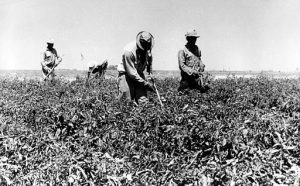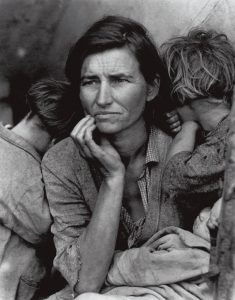Capturing the Sacred: American Photography and Mexican Farmworkers
Professor Lloyd Barba
In his lecture, Professor Barba examined Mexican migrant farm workers in the central valley of California. His research focused on photographs taken by the farmers themselves as opposed to photos taken by the government, and how the photographs told the story of these farmers. The photos taken by farmers show the subject’s faces, while government photos show stooped, faceless workers. With the advent of the Kodak camera, a culture of sentiment was created, where the mundane, everyday life of these Mexican laborers was captured.

After gold rush, land spectators turned their gaze to the central valley in agricultural. Intensive labor crops became the main industry in CA, and many low wage laborers from Mexico immigrated to the US to work in the farms of CA. A societal shift was occurring, redefining farming as in industrial mode of profit rather than a way of life in the frameworks of an agrarian society.
In his research, Professor Barba drew from photographs of a Mexican pentecostal association from the 1930-1950’s. As they built churches, they transformed something profane to something sacred. Baptisms were an extremely important part of the pentecostal religion, and occurred in the King’s River and San Joaquin River. By holding baptismal rights here, the members of this church constructed sacred space. Barba also referred to this as “situational sacred space,” where the sacredness depends upon social activities that take place there through human consecration. This was evidence of the working class taking control of a space in a society where they had few spaces to call their own.
Barba also focused on Dorothea Lange’s iconic photograph “Migrant Mother.” This photo is known as a symbol of the Great Depression, and was taken at a labor camp where most of the workers there were Mexican, not white Oklahomans fleeing from the dust bowl (like the woman in the picture). This emphasizes the empathetic value of white skin as opposed to brown skin, and how the photographer utilized that value.

I thought this talk was very enlightening, and was especially interesting because it focused on something so mundane, something that hasn’t been preserved well or studied at length. Barba’s work recording oral histories and uncovering the traditions of the Mexican pentecostal community helps contribute to the archives of our society and un-silence their narratives. Further, his research with the photographs (and not just oral histories) clarifies how technology (the camera) shapes the collective memories of this group and how it helps to preserve stories that might else be forgotten and silenced.
Leave a Reply